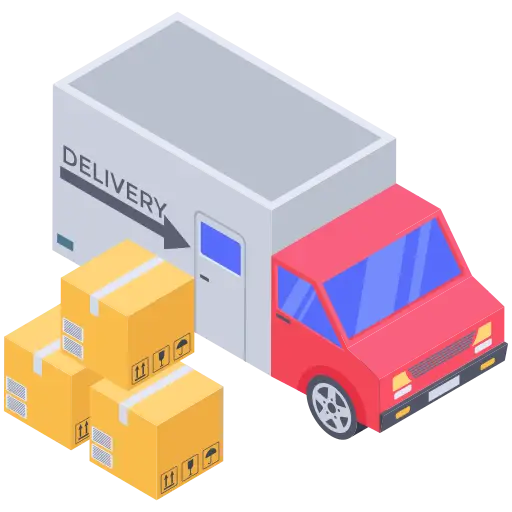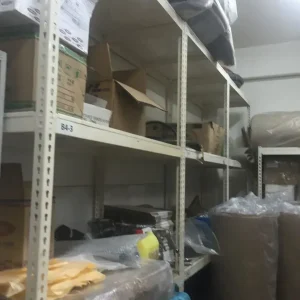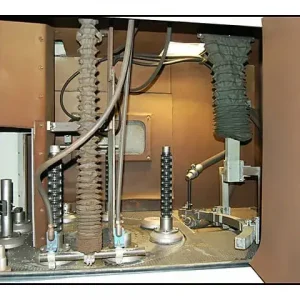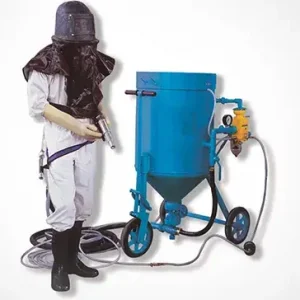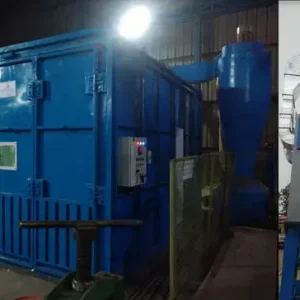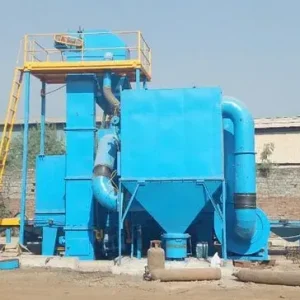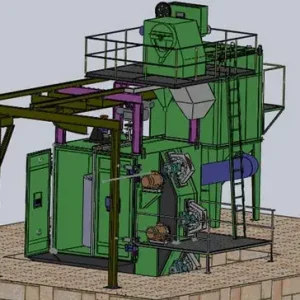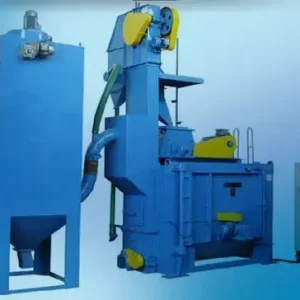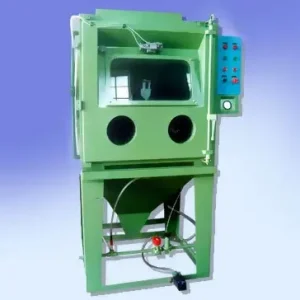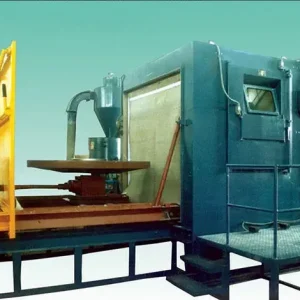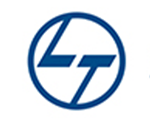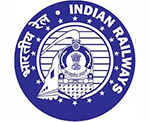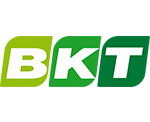By AeroWheel Surface Finishing
If you’re planning to buy a shot blasting machine, upgrade your existing system, or simply want to understand the process better, you’re not alone. At AeroWheel Surface Finishing, we regularly get questions from manufacturers, fabricators, and engineers across India—especially in Rajasthan—about how shot blasting works, what machine to choose, and how to maintain it.
In this blog, we’ve compiled the most frequently asked questions (FAQs) about shot blasting machines to help you make better decisions, avoid costly mistakes, and run your operations more efficiently.
1. What is a shot blasting machine?
A shot blasting machine is a piece of industrial equipment that cleans, polishes, or prepares the surface of metal parts by bombarding them with small abrasive particles (known as shot or grit). It removes:
- Rust
- Scale
- Paint
- Heat-treated layers
- Surface contamination
It is commonly used in industries like automotive, foundry, fabrication, casting, and construction.
2. How does a shot blasting machine work?
Shot blasting machines operate using high-speed blast wheels that throw abrasive media onto the surface of a component. The key components of the system include:
- Blast wheels
- Blast chamber
- Media recovery and separator system
- Dust collector
- Control panel
The process is usually enclosed and automated for safety and consistency.
3. What are the types of shot blasting machines?
There are several types, each designed for specific applications:
- Tumblast machines: Ideal for small, batch-type components
- Table type machines: Suitable for flat, heavy or circular parts
- Spinner hanger machines: For larger and more delicate parts
- Roller conveyor machines: Best for plates, beams, and structural steel
- Portable shot blasters: Used for on-site cleaning of large surfaces
4. What abrasive media is used in shot blasting?
Common abrasives include:
- Steel shots: Spherical, for polishing and peening
- Steel grit: Angular, for aggressive cleaning
- Cut wire shots: For consistent peening and finishing
- Chilled iron grit: Fast cleaning, short lifespan
- Glass beads or aluminum oxide: For special applications (usually in air blasting)
Your choice depends on the material, finish, and blasting goal.
5. What industries use shot blasting machines?
Shot blasting is used across many industries:
- Foundry and casting
- Automotive and OEM parts
- Structural steel fabrication
- Railways and heavy engineering
- Defense and aerospace
- Metal furniture and handicrafts
6. Is shot blasting the same as sandblasting?
Not exactly. Though both are surface cleaning processes, they differ in:
- Abrasive media used
- Machine design
- Method of operation
Shot blasting typically uses steel-based abrasives and operates through blast wheels, while sandblasting usually uses sand or grit and is powered by compressed air.
7. How do I choose the right shot blasting machine for my business?
Consider these factors:
- Size and weight of components
- Type of material (steel, aluminum, etc.)
- Required surface finish
- Volume of production
- Available space in your facility
- Budget and automation needs
At AeroWheel, we offer free consultations and custom solutions tailored to your production needs.
8. What maintenance is required for a shot blasting machine?
Regular maintenance is key to long-term performance. Key tasks include:
Why Shot Blasting Is Crucial Before Powder Coating
The History and Evolution of Shot Blasting Technology
Why Choose Aerowheel Surface Finishing for Your Shot Blasting Needs?
- Checking and replacing worn blast wheel parts
- Cleaning dust collectors and filters
- Lubricating bearings and moving parts
- Monitoring abrasive flow and media level
- Inspecting seals, liners, and belts
We recommend setting up a weekly and monthly maintenance plan for optimal uptime.
9. What is the life of a shot blasting machine?
With proper use and maintenance, a quality shot blasting machine can last 10 to 15 years or more. Key components like blast wheels and liners will need periodic replacement, but the frame and structure are built to last.
10. Are spare parts easily available?
Yes, AeroWheel Surface Finishing provides genuine spare parts, including:
- Blast wheels
- Impellers
- Control cages
- Liners
- Belts
- Dust filters
We also offer AMC (Annual Maintenance Contracts) to keep your machine in top condition.
11. Can shot blasting be automated?
Absolutely. Many of our machines come with:
- PLC-based control panels
- Auto-timer functions
- Load/unload conveyors
- Media monitoring systems
Automation improves consistency, safety, and productivity—especially in high-volume industries.
12. How much does a shot blasting machine cost in India?
The price depends on the type and size of the machine. Here’s a rough idea:
- Tumblast (small): ₹3.5 – ₹6 lakh
- Table type: ₹6 – ₹12 lakh
- Spinner hanger: ₹10 – ₹20 lakh
- Roller conveyor: ₹15 – ₹35+ lakh
- Custom automation systems: Varies by scope
We always recommend a site visit and requirement analysis before quoting.
13. Why choose AeroWheel Surface Finishing?
Because we offer:
- High-quality machines made in Jodhpur
- Custom engineering for your specific industry
- Reliable service and support
- Fast delivery of spare parts
- Transparent pricing and long-term value
With years of experience across Rajasthan and beyond, AeroWheel is trusted by manufacturers large and small.
Conclusion
Shot blasting machines are a crucial part of modern manufacturing—and understanding how they work, how to maintain them, and how to choose the right one can make a big difference in your productivity and finish quality.
Still have questions? Our team at AeroWheel Surface Finishing is always here to help. Whether you’re planning a new installation or upgrading your current system, we’ll guide you every step of the way.
Have more questions not covered above?
📞 Contact AeroWheel today for a free consultation or product demo.

